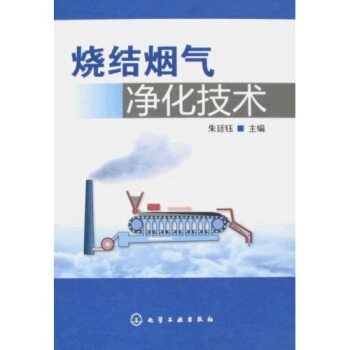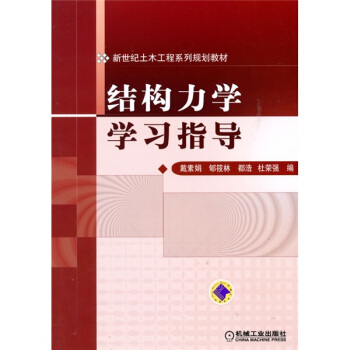![有机化学中的光谱方法(第6版) [Spectroscopic Methodsir Organic Chemistry 6th de]](https://pic.qciss.net/10104476/5e8b0ef6-22a5-43cc-beba-393a1c70a502.jpg)

具体描述
内容简介
《有机化学中的光谱方法(第6版)》是一本由英国剑桥大学D. H. Williams和I. Fleming合著的有机化学光谱方法经典教材。第1版出版于1966年,《有机化学中的光谱方法(第6版)》为第6版。书中讲述了近年来迅猛发展的二维核磁共振(如Tocsy、远‘H-13C COSY)、MALDI、FT-ICR、TOF等新技术。与时俱进,本版较前版在内容上做了较大的改动,有关UV和IR光谱的部分讲述的更加准确;丰富了关于NMR的内容;介绍MS的部分更加讲求结合实际。全书共分为五章,第1章为紫外和可见光谱,论述了电子吸收光谱在测定有机基团中的应用;第2章红外光谱,阐述了傅里叶红外和喇曼光谱的样品制备、光谱选律以及各官能团的特征吸收频率;第3章核磁共振波谱,主要介绍了‘H和13C核磁共振的经验参数、各种二维NMR的具体应用;第4章质谱,介绍了各种粒子谱以及气相和液相色谱与质谱的联用;第5章实例和习题,为读者提供了一些选自研究课题、具有启发性的实例,也为读者巩固所学的知识提供了练习。《有机化学中的光谱方法(第6版)》理论和实践并举,因此也适合有机化学工作者做为手册使用。读者对象:高校化学系师生、有关研究人员。
内页插图
目录
PrefaceChapter 1: Ultraviolet and visible spectra
1.1 Introduction
1.2 Chromophores
1.3 The absorption laws
1.4 Measurement of the spectrum
1.5 Vibrational fine structure
1.6 Choice of solvent
1.7 Selection rules and intensity
1.8 Solvent effects
1.9 Searching for a chromophore
1.10 Definitions
1.11 Conjugated dienes
1.12 Polyenes
1.13 Polyeneynes and poly-ynes
1.14 Ketones and aldehydes; π-π* transitions
1.15 Ketones and aldehydes; π-π* transitions
1.16 α,β-Unsaturated acids, esters, nitriles and amides
1.17 The benzene ring
1.18 Substituted benzene rings
1.19 Polycyclic aromatic hydrocarbons
1.20 Heteroaromatic compounds
1.21 Quinones
1.22 Corroles, chlorins and porphyrins
1.23 Non-conjugated interacting chromophores
1.24 The effect ofsteric hindrance to coplanarity
1.25 Internet
1.26 Bibliography
Chapter 2: Infrared spectra
2.1 Introduction
2.2 Preparation of samples and examination in an infrared spectrometer
2.3 Examination in a Raman spectrometer
2.4 Selection rules
2.5 The infrared spectrum
2.6 The use of the tables of characteristic group frequencies
2.7 Absorption frequencies of single bonds to hydrogen 3600-2000 cm-
2.8 Absorption frequencies of triple and cumulated double bonds2300-1930 cm-
2.9 Absorption frequencies of the double-bond region 1900-1500 em-1
2.10 Groups absorbing in the fingerprint region <1500 cm-1
2.11 Internet
2.12 Bibliography
2.13 Correlation charts
2.14 Tables of data
Chapter 3: Nuclear magnetic resonance spectra
3.1 Nuclear spin and resonance
3.2 The measurement of spectra
3.3 The chemical shift
3.4 Factors affecting the chemical shift
3.4.1 Intramolecular factors affecting the chemical shift
3.4.2 Intermolecular factors affecting the chemical shift
3.5 Spin-spin coupling to 13C
3.5.1 13C-2H Coupling
3.5.2 13C-1H Coupling
3.5.3 13C-13C Coupling
3.6 1H-1H Vieinal coupling (3JHH)
3.7 1H-1H Geminal coupling (2JHH)
3.8 1H-1H Long-range coupling (4JHH and 5JHH)
3.9 Deviations from first-order coupling
3.10 The magnitude of 1H-1H coupling constants
3.10.1 Vicinal coupling 3JHH
3.10.2 Geminal coupling (2JHH)
3.10.3 Long-range coupling (4JHH and 5JHH)
3.11 Line broadening and environmental exchange
3.11.1 Efficient relaxation
3.11.2 Environmental exchange
3.12 Improving the NMR spectrum
3.12.1 The effect of changing the magnetic field
3.12.2 Shift reagents
3.12.3 Solvent effects
3.13 Spin decoupling
3.13.1 Simple spin decoupling
3.13.2 Difference decoupling
3.14 The nuclear Overhanser effect
3.14.1 Origins
3.14.2 NOE Difference spectra
3.15 Assignment ofCH3, CH2, CH and quaternary carbons in 13C NMR
3.16 Identifying spin systems——1D-TOCSY
3.17 The separation of chemical shift and coupling onto different axes
3.18 Two-dimensional NMR
3.19 COSY spectra
3.20 NOESY spectra
3.21 2D-TOCSY spectra
3.22 1H-13C COSY spectra
3.22.1 Heteronuclear Multiple Quantum Coherence (HMQC) spectra
3.22.2 Heteronuclear Multiple Bond Connectivity (HMBC) spectra
3.23 Measuring 13C-IH coupling constants (HSQC-HECADE spectra)
3.24 Identifying 13C-13C connections (INADEQUATE spectra)
3.25 Three- and four-dimensional NMR
3.26 Hints for spectroscopic interpretation and structure determination
3.26.1 Carbon spectra
3.26.2 Proton spectra
3.26.3 Hetero-correlations
3.27 Internet
3.28 Bibliography
3.29 Tables of data
Chapter4: Mass spectra
4.1 Introduction
4.2 Ion production from readily volatile molecules
4.2.1 Electron impact (EI)
4.2.2 Chemical Ionisation (CI)
4.3 Ion production from poorly volatile molecules
4.3.1 Fast ion bombardment (FIB or LSIMS)
4.3.2 Laser desorption (LD) and matrix-assisted laser desorption (MALDI)
4.3.3 Electrospray ionisation (ESI)
4.4 Ion analysis
4.4.1 Magnetic analysers
4.4.2 Combined magnetic and electrostatic analysers——high-resolution mass spectra (HRMS)
4.4.3 Ion cyclotron resonance (ICR) analysers
4.4.4 Time-of-flight (TOF) analysers
4.4.5 Quadrupole analysers
4.4.6 Ion-trap analysers
4.5 Structural information from mass spectra
4.5.1 Isotopic abundances
4.5.2 EI spectra
4.5.3 CI spectra
4.5.4 FIB (LSMIS) spectra
4.5.5 MALDI spectra
4.5.6 ESI spectra
4.5.7 ESI-FT-ICR and ESI-FT-Orbitrap spectra
4.6 Separation coupled to mass spectrometry
4.6.1 GC/MS and LC/MS
4.6.2 MS/MS
4.7 MS data systems
4.8 Specific ion monitoring and quantitative MS (SIM and MIM)
4.9 Interprcting the spectrum of an unknown
4.10 Internet
4.11 Bibliography
4.12 Tables of data
Chapter 5: Practice in structure determination
5.1 General approach
5.2 Simple worked examples using 13C NMR alone
5.3 Simple worked examples using 1H N-MR alone
5.4 Simple worked examples using the combined application of all fourspectroscopic ethods
5.5 Simple problems using 13C NMR or joint application of IR and 13C NMR
5.6 Simple problems using 1H NMR
5.7 Problems using a combination of spectroscopic methods
5.8 Answers to problems 1-33
Index
精彩书摘
The energy absorbed by the matrix is transferred indirectly to the sample, which reduces any sample decomposition. The matrix is chosen to have solubility properties similar to those of the sample, in order that the sample molecules are properly dispersed. Higher molecular weight oligomeric clumps are produced as 2M+, 3M+, and so on, but these are usually minor components of the spectrum if a well-matched matrix is chosen.4.3.3 Electrospray ionisation (ESl) An electrospray is the term applied to the small flow of liquid (generally 1-10 lxl/min) from a capillary needle when a potential difference typically of 3-6 kV is applied between the end of the capillary and a cylindrical electrode located 0.3-2 cm away (Fig. 4.4). The liquid leaves the capillary as a fine mist at or near atmospheric pressure, and consists of highly charged liquid droplets. The charge on these droplets may be selected as positive or negative according to the sign of the voltage applied to the capillary. ESI is especially useful since it can be used to analyse directly the effluent from an HPLC column.
The use of a sheath gas or nebulising gas promotes efficient spraying of the solution of the sample from the capillary. Sample molecules dissolved in the spray are released from the droplets by evaporation of the solvent. This evaporation is accomplished by passing a drying gas across the spray before it enters a capillary. As the droplets are multiply charged, and reduced in size by evaporation, the rate of desolvation is increased because of repulsive Coulombic forces. These forces eventually overcome the cohesive forces of the droplet, and an MH~ (or M - H+) molecular ion free of solvent is finally produced. The charged particles are carried, by an appropriate electric field, through a capillary and into an ion analyser.
前言/序言
This book is the sixth edition of a well-established introductory guide to the interpretation of the ultraviolet, infrared, nuclear magnetic resonance and mass spectra of organic compounds. It is a textbook suitable for a first course in the application of these techniques to structure determination, and as a handbook for organic chemists to keep on their desks throughout their career. These four spectroscopic methods have been used routinely for several decades to determine the structure of organic compounds, both those made by synthesis and those isolated from natural sources. Every organic chemist needs to be skilled in how to apply them, and to know which method works for which problem. In outline, the ultraviolet spectrum identifies conjugated systems, the infrared spectrum identifies functional groups, the nuclear magnetic resonance spectra identify how the atoms are connected, and the mass spectrum gives the molecular formula. One or more of these techniques nowadays is very frequently enough to identify the complete chemical structure of an unknown compound, or to confirm the structure of a known compound. If they are not enough on their own, there are other methods that the organic chemist can turn to: X-ray diffraction, microwave absorption, the Raman spectrum, electron spin resonance and circular dichroism, among others. Powerful though they are, these techniques are all more specialised, and less part of the everyday practice of most organic chemists,We have kept discussion of the theoretical background to a minimum, since application of the spectroscopic methods is possible without a detailed command of the theory behind them. We have described instead how the techniques work, and how to read each of the four kinds of spectra, including each of the most important 2D N-MR spectra. We have included many tables of data at the ends of Chapters 2, 3 and 4, all of which are needed in the day-to-day interpretation of spectra. Finally in Chapter 5, we work through 11 examples of the way in which the four spectroscopic methods can be brought together to solve fairly simple structural problems, and there are 33 problem sets for you to work through for practice.
In preparing a sixth edition, we have almost completely rewritten the book, to reflect our experience teaching the subject, and to respond to changes that have taken place, both of emphasis and of fact, since the fifth edition was published. The chapters on UV and IR spectra are more concise, the chapter on NMR is expanded, and the chapter on MS made more specific to the everyday, rather than to the more specialised, applications of this technique. The appearance of IR absorptions, formerly gathered at the end of the chapter, are now illustrated at the relevant points in the text. Conversely, we have moved the tables of IR data to the end of the chapter, where they are more convenient for reference, and match the arrangement we have always used for the NMR and MS chapters. Most significantly, we have replaced all of the 60 MHz spectra used hitherto to explain the fundamentals of NMR spectroscopy with new and carefully chosen examples at 400 MHz or more. We have also chosen several new compounds with which to illustrate better the common 2D NMR techniques.
用户评价
我必须说,这本书的视角非常独特,它不仅仅是告诉你“怎么做”,更重要的是告诉你“为什么这么做”。很多其他的教材可能只是罗列了各种谱图解析的规则,但这本书却深入浅出地解释了这些规则背后的物理和化学原理。比如,在讲解核磁共振谱时,它会详细介绍自旋-自旋偶合是如何产生的,化学位移的来源是什么,这些深层次的理解,对于我日后独立解决更复杂的谱图分析问题至关重要。书中的语言风格也很有趣,它不会用过于生硬的学术术语来吓退读者,而是用一种比较平易近人的方式来讲解复杂的概念,即使是一些初学者,也能很快跟上节奏。我还发现,这本书对于一些容易出错的地方,都会特别强调,并给出纠正的方法,这绝对是学习过程中的“保命符”。我感觉读这本书,就像是在和一位经验丰富的老师在进行一场深入的对话,你会不断地提问,然后得到清晰而有力的解答。总而言之,这是一本能够真正让你“学懂”光谱学的书,而不是停留在“会用”的层面。
评分坦白说,这本书对我来说,简直就是黑暗中的一盏明灯!之前我对有机光谱这块儿一直是一知半解,概念模模糊糊,谱图更是看得云里雾里,做实验时也总是心虚。接触到这本书后,我感觉整个世界都豁然开朗了。它没有直接抛出复杂的理论,而是从最基本的光谱原理讲起,循序渐进,一步步引导你建立起完整的知识体系。我特别欣赏它在讲解每一种光谱技术时,都辅以大量的实际案例,这些案例都非常有代表性,涵盖了不同类型的有机分子,通过分析这些真实的谱图,我才真正理解了理论知识是如何应用于实际的。它对于一些容易混淆的概念,比如化学位移和偶合常数,也做了非常细致的区分和解释,让我不再感到困惑。而且,书中的习题设计也很巧妙,既能检验你对理论的掌握程度,又能锻炼你分析谱图的能力,很多题目都非常有挑战性,但解决之后会带来巨大的成就感。这本书让我对有机光谱的信心倍增,感觉自己终于摸到了门道,不再是那个只会“死记硬背”的学生了。
评分这本书的质量真的没得说,无论是纸张、印刷还是排版,都做得非常用心。拿在手里,沉甸甸的,一股知识的厚重感扑面而来。我本来是想找一本关于有机化学光谱学的参考书,没想到这本书的内容比我想象的还要丰富和深入。它不仅仅是简单地介绍各种光谱技术,更重要的是,它能够让你理解这些技术背后的原理,以及如何将这些原理融会贯通,应用于解决实际的有机化学问题。我最喜欢的是书中对于不同光谱技术之间联系和互补性的阐述,很多时候,一种光谱技术无法完全解析的分子结构,可以通过结合另一种光谱技术来获得更全面的信息。这本书就很好地体现了这一点,它会告诉你如何巧妙地组合运用多种光谱方法,从而高效准确地确定有机分子的结构。另外,书中对于一些前沿的光谱技术也有所提及,这对于想要了解最新研究动态的读者来说,非常有价值。可以说,这本书不仅是一本教科书,更是一本可以作为案头的参考工具书,随时翻阅,都能获得新的启发。
评分作为一名有着一定有机化学基础的学习者,我一直对光谱分析在结构确证中的强大作用感到着迷,但总觉得还缺点什么。直到我遇到这本书,我才真正体会到了“融会贯通”的乐趣。它并非简单地介绍单一的光谱技术,而是着重于不同技术之间的协同作用,以及如何在实际研究中灵活运用这些工具。书中对于一些非常具有挑战性的分子结构的解析案例,简直是令人拍案叫绝。它通过一步步的逻辑推理,展示了如何从看似杂乱的谱图信息中抽丝剥茧,最终锁定目标结构。这种解决问题的思路和方法,比单纯记忆谱图的特征要重要得多。而且,这本书的作者似乎非常了解学习者的困惑,在讲解过程中,总能恰到好处地加入一些“点拨”,让你在关键时刻豁然开朗。我特别喜欢它在章节结尾处设置的总结和思考题,能够帮助我巩固所学,并激发我进一步的探索欲望。这本书让我觉得,光谱分析不再是一门枯燥的技术,而是一种充满智慧和艺术的科学,我非常享受学习它的过程。
评分这是一本绝对能让你眼前一亮的教科书!光看封面,就透着一股专业和厚重感,立刻让人觉得这绝对是本干货满满的书。我当初选择它,就是因为它在有机化学光谱领域口碑极佳,很多同学都推荐过,说是入门和进阶的必备读物。拿到手里,厚实的手感就让人心安,翻开目录,内容编排得条理清晰,从基础的核磁共振到质谱、红外光谱,再到更复杂的二维谱技术,几乎涵盖了有机化学研究中所有常用的光谱分析方法。而且,它不像有些书那样枯燥乏味,大量的图示和实例穿插其中,非常形象生动,即使是初学者,也能很快理解那些抽象的概念。我尤其喜欢它解析谱图的步骤和技巧,非常实用,感觉就像跟着一位经验丰富的导师在一步步指导你如何“读懂”谱图。书中的语言风格也比较严谨,但又不失可读性,不会让人产生畏难情绪。总之,如果你正在学习有机化学,或者在科研中需要用到光谱分析,这本绝对是你的首选,强烈推荐!
评分汉语版,我没看,不喜欢翻译过来的书刊
评分经典的参考手册。
评分汉语版,我没看,不喜欢翻译过来的书刊
评分经典的参考手册。
评分很不错的一本书,英文的。
评分帮朋友买的,她很满意。
评分内容包含的东西不少,但都比较浅,作为初学了解还行吧。
评分很不错的一本书,英文的。
评分汉语版,我没看,不喜欢翻译过来的书刊
相关图书
本站所有内容均为互联网搜索引擎提供的公开搜索信息,本站不存储任何数据与内容,任何内容与数据均与本站无关,如有需要请联系相关搜索引擎包括但不限于百度,google,bing,sogou 等
© 2025 book.qciss.net All Rights Reserved. 图书大百科 版权所有

![非平衡态量子场论(英文版) [Quantum Field Theory Of Non-equilibrium States] pdf epub mobi 电子书 下载](https://pic.qciss.net/10104526/02fba0b5-3ada-4fc5-8409-e38c4dcdc447.jpg)
![牛津英语百科分类词典系列:牛津地球科学词典 [Oxford Dictionary of Earth Sciences] pdf epub mobi 电子书 下载](https://pic.qciss.net/10114802/e9cc17e1-f223-46ae-bb7b-80d5eaafe553.jpg)
![染色体基因与疾病 [Chromosome, gene and disease] pdf epub mobi 电子书 下载](https://pic.qciss.net/10122736/10add117-c020-46c2-a009-1ec15744313c.jpg)


![细胞周期调控原理 [The Cell Cycle:Principles of Control] pdf epub mobi 电子书 下载](https://pic.qciss.net/10123398/bd0d4a1a-211a-4901-9a59-e903bf8e2445.jpg)













